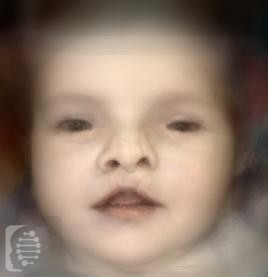What is Frontometaphyseal Dysplasia (FMD)?
Frontometaphyseal Dysplasia is a rare disease and one of several otopalatodigital spectrum disorders.
It affects the development of the skeleton and other organs in the body. It is diagnosed mainly in males (due to its mode of inheritance) and females affected usually present with less severe symptoms.
What gene change causes Frontometaphyseal Dysplasia (FMD)?
Changes in the FLNA gene cause the syndrome. It is inherited in an X-linked pattern.
Frontometaphyseal Dysplasia Type 2 is caused by mutations in the MAP3K7 gene, and this form of the syndrome is inherited in an autosomal dominant pattern.
In the case of autosomal dominant inheritance just one parent is the carrier of the gene mutation, and they have a 50% chance of passing it onto each of their children. Syndromes inherited in an autosomal dominant inheritance are caused by just one copy of the gene mutation.
What are the main symptoms of Frontometaphyseal Dysplasia (FMD)?
The main symptoms of this syndrome include hearing loss, cleft palate and defects that affect the bones in the fingers and toes.
Unique to Frontometaphyseal Dysplasia are joint contractures, which affect how easily an individual can move their joints.
Unique facial features of the syndrome include wide-set and downward slanting eyes, a very small jaw, as well as small and potentially missing teeth.
Health conditions associated with the syndrome include heart defects and breathing issues.
How is it diagnosed?
To determine whether someone is diagnosed with Frontometaphyseal Dysplasia (FMD), it is important to consult and evaluate with a clinical genetic specialist. Specialists may also suggest specific genetic testing or other types of tests to help reach a diagnosis. FDNA’s AI technology can help speed up the diagnostic process by analyzing facial features and other health information.

